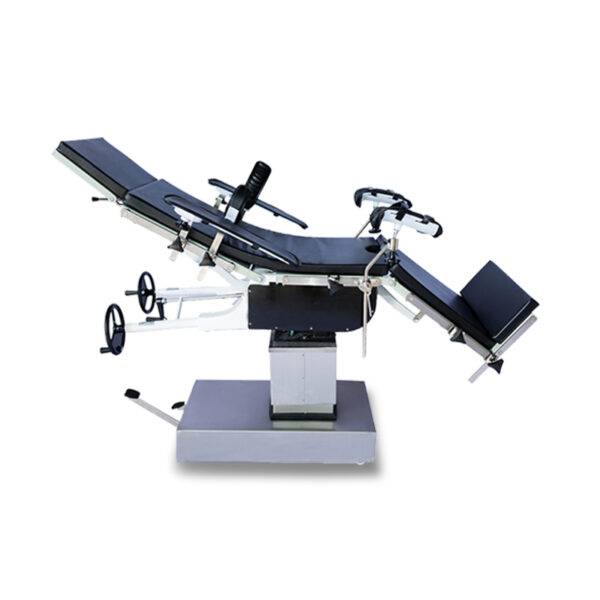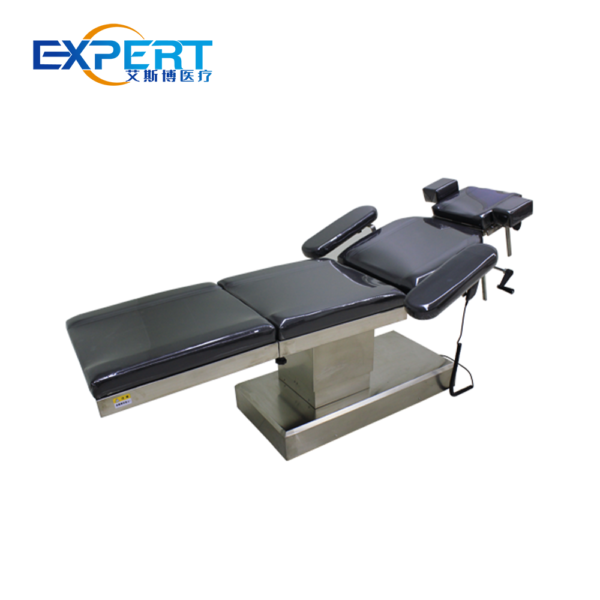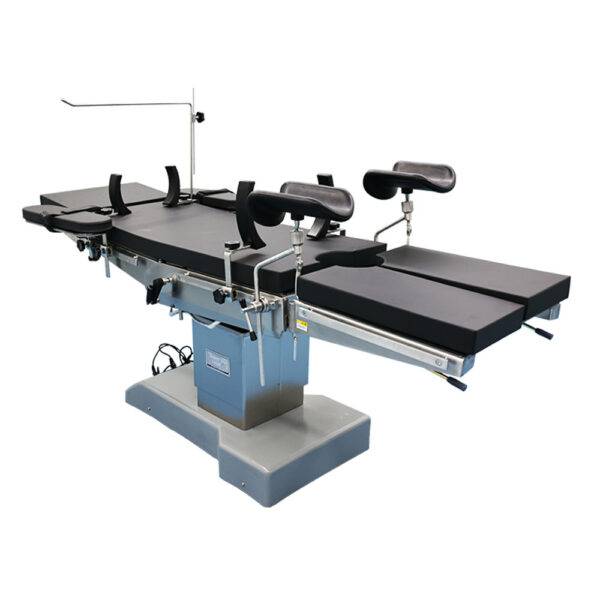Dirección
304 North Cardinal St.
Dorchester Center, MA 02124
Horas laborales
Lunes a viernes: 7:00 a. M. - 7:00 p. M.
Fin de semana: 10 a. M. - 5 p. M.
Antes de profundizar en el contenido, me encantaría que te unas a mí en mis plataformas de redes sociales, donde comparto más información, interactúo con la comunidad y publico actualizaciones. Puedes conectarte conmigo de la siguiente manera:
Facebook:https://www.facebook.com/profile.php?id=100071234835011
LinkedIn:https://www.linkedin.com/company/74943205/admin/dashboard/
YouTube:www.youtube.com/@shandongexpertmedicalequip4695
TikTok:www.tiktok.com/@expertmedical
Ahora, comencemos nuestro viaje juntos. Espero que el contenido que se incluye aquí te resulte interesante, interesante y valioso.

The patient operating table is a fundamental piece of equipment in any surgical setting. Its primary function is to provide a stable and adjustable platform for patients during surgical procedures. However, advancements in medical technology have led to the development of highly sophisticated patient operating tables that offer numerous benefits beyond basic positioning. This article will delve into the advantages of these advanced patient operating tables, exploring how they enhance patient safety, surgical precision, and overall efficiency in the operating room.
One of the most critical benefits of patient operating tables is their contribution to patient safety. These tables are designed to minimize the risk of complications and improve patient outcomes.
Patient operating tables play a significant role in improving surgical precision. These tables are equipped with features that allow surgeons to perform delicate procedures with greater accuracy and control.

-600x600.jpg)

.jpg)





Patient operating tables can streamline surgical workflows and improve overall efficiency. These tables are designed to reduce setup time, minimize surgical delays, and enhance the overall surgical experience.
Patient operating tables can also enhance patient comfort and satisfaction. These tables are designed to minimize pain and discomfort during and after surgery, and to create a more positive overall surgical experience.
Technological advancements have played a pivotal role in the development of modern patient operating tables. These tables are equipped with a variety of technologies that enhance their functionality and improve patient care.
The materials used in the construction of patient operating tables are carefully selected to ensure durability, hygiene, and patient safety. These tables are designed to withstand the rigors of surgery and to provide a clean and safe environment for patients.

| Característica | Descripción | Beneficios |
|---|---|---|
| Patient Operating Table Movement | Electric motors control table movement. | Precise, controlled positioning; reduced physical strain on staff. |
| Radiolucent Materials | Allow for unobstructed imaging. | Enhanced visualization during surgery. |
| Customizable Support Surfaces | Various options to accommodate different patient needs. | Improved patient comfort and surgical precision. |
| Integración con sistemas de imágenes | Seamless integration with C-arms and other imaging equipment. | Enhanced surgical planning and guidance. |
| Recubrimientos antimicrobianos | Reduce the risk of infection. | Improved patient safety. |
Patient operating tables have revolutionized the way surgical procedures are performed. By enhancing patient safety, surgical precision, and efficiency, these tables have become indispensable tools in modern operating rooms. As technology continues to advance, we can expect to see even more innovative features and capabilities incorporated into future generations of patient operating tables.
What are the primary benefits of advanced patient operating tables?
Advanced patient operating tables offer numerous benefits, including improved patient safety, enhanced surgical precision, increased efficiency, and greater patient comfort.
How do advanced patient operating tables contribute to patient safety?
These tables help to reduce the risk of pressure ulcers, falls, and other complications by providing optimal patient positioning and stability.
What role does technology play in modern patient operating tables?
Technology has enabled the development of features such as motorized movement, computerized control, and integration with other medical devices.
What materials are used in the construction of patient operating tables?
Common materials include radiolucent materials and those with antimicrobial coatings.
